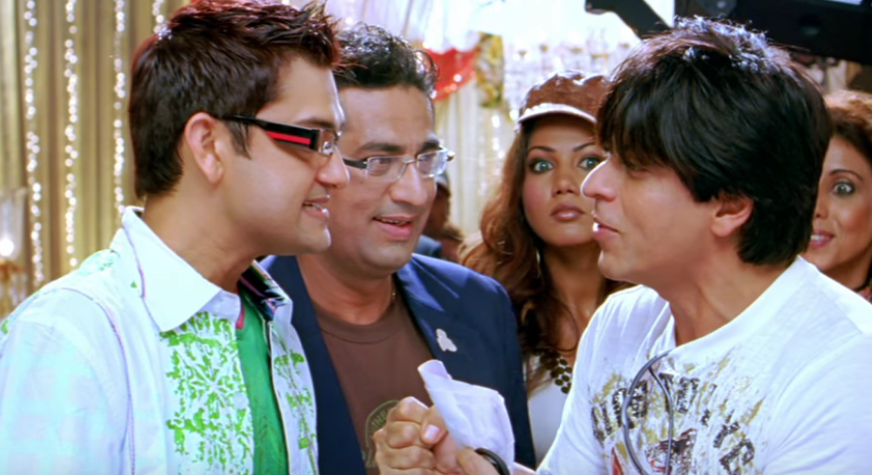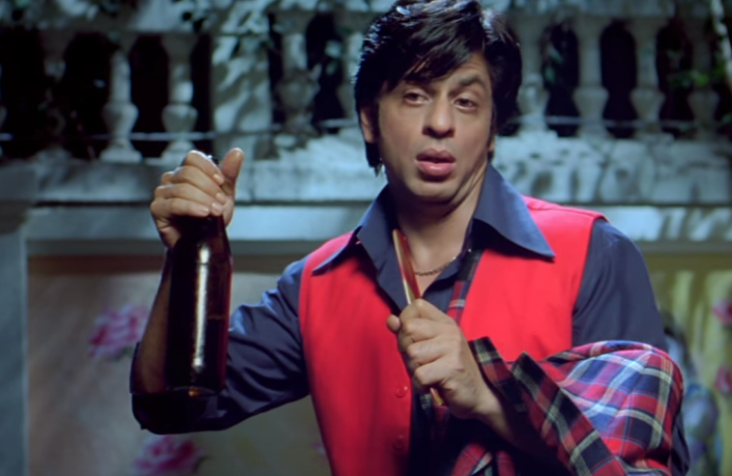‘Om Shanti Om’ was the most successful Hindi language film released in the year 2007. The film also proved to be a turning point in the career of Mayur Puri, who wrote the dialogues for it. Before ‘Om Shanti Om’ happened Mayur had written the scripts for many popular films and lyrics for songs that went on to become chartbusters. ‘Om Shanti Om’, however, proved to be a milestone in his relatively young career as a screenwriter. Dialogues like “ek chutki sindoor ki keemat tum kya jaano Ramesh babu….” and “itni shiddat se maine tumhein paane ki koshish ki hai, ki har zarre ne mujhe tumse milaane ki saazish ki hai…” continue to be as popular today as they were when the film first released in theatres and became a blockbuster.
As the film completes 15 years of its release today, Mayur shares his experiences and some of his special memories associated with the Shah Rukh Khan – Deepika Padukone starrer musical reincarnation drama.
You had not worked with Farah Khan earlier. How did you come on board for ‘Om Shanti Om’?
I met Farah ma’am for the first time in the year 2004. I was working as an associate director on ‘Dhoom’ and she was directing ‘Main Hoon Na’ around the same time. One day, I was on the sets of ‘Main Hoon Na’ to meet Allan Amin who was the action director on both the films. That’s the first time I got to meet Farah ma’am. It was a brief, formal meeting. After a while, Red Chillies Entertainment was producing an ad film for a car brand. Shah (Rukh Khan) sir was acting in it. There was a need for some poetry in that ad. I was given the task of writing poetry for that project. That was the first time I worked with Farah ma’am. For some reason, poetry was not used in the ad.
Around the same time, I was writing a film called ‘My Name Is Anthony Gonsalves’. Red Chillies Entertainment had come on board as the producer for the film. Nikhil Dwivedi, the lead actor of the film, would often tell Farah ma’am and Shah sir that Mayur is a very good writer and you must check out his work. Joyeeta Chatterji, the chief assistant director on ‘Dhoom’, was working on ‘Main Hoon Na’. Even she recommended my name to Farah ma’am. One day, Farah ma’am called me for a meeting. They were doing some look tests for Deepika that day. She asked me to write a couple of lines that Deepika could say. The ‘ek chutki sindoor….’ dialogue was written then. Farah ma’am really liked it and got me on board to write the dialogues for the film.
How long did it take for you to write the dialogues for the film?
The entire film was written in forty-two days.
While the first half of the film was set in the ‘70s, the second half was based in 2007. Did you have to keep this factor in mind while writing the dialogues?
I had not thought about it very deeply but I guess that was something that happened organically. When you see the film, you do realize that the language of the characters in the two halves of the film are very different. In the second half, they use a lot of English words while conversing. The language used in any film would, naturally, reflect the situation or the period it is set in. If I had to write ‘Om Shanti Om’ today, the language of the characters would be very different.
‘Om Shanti Om’ was a film set in the Hindi film industry. Within the film, we witnessed multiple films being shot. Was that the reason you had to write certain lines that were over-the-top?
Honestly, I didn’t find any of the dialogues to be over the top. ‘Ek chutki sindoor….’, for instance, was a dialogue that reflected the storyline of the film which Shantipriya (Deepika Padukone) was shooting for and also what she was going through in her own life. She wanted to get married to Mukesh Mehra (Arjun Rampal), a man who was taking undue advantage of her. Even when we wrote dialogues for a film that was being shot within the film, we ensured that it had some relevance to the film we were making.
One of the most popular dialogues from the film was “itni shiddat se maine tumhein paane ki koshish ki hai, ki har zarre ne mujhe tumse milaane ki saazish ki hai …..”. It is a dialogue that many people have been inspired by.
‘Om Shanti Om’ was a film about revenge and reincarnation. When you are writing a film on reincarnation, you know the protagonist is going to die and be born again. While writing such a film, you have to ensure that the character’s life was extraordinary. If his life doesn’t register, you wouldn’t be able to connect to his death. In ‘Anand’, the character played by Rajesh Khanna lived life to the fullest. He was positive, full of life and had the attitude of a fighter. That’s why the audience felt sad when he died. It is often said that irony is the bane of all good writing. If somebody loses their life, it’s painful. However, you feel even sadder when the person was an Olympic medal winner or somebody who has achieved something significant in some other field.
It was also that one dialogue that arrived at two crucial junctures in the film. In a lot of ways, it helped Om Kapoor (Shah Rukh Khan) find a connection between his past life and the present.
Yes! Om Prakash Makhija (Shah Rukh Khan) wishes to be a superstar but his dream remains unrealized. However, he gets to live this dream when he is born again as Om Kapoor.
This particular thought has been discussed in the popular non-fiction book ‘The Secret’ as the law of attraction.
Yes, that’s right. Thoughts are never new. You just express them in newer ways. Apart from ‘The Secret’, this particular thought has also been expressed in Paulo Coelho’s ‘The Alchemist’. I hadn’t read these books while I was writing the dialogues for ‘Om Shanti Om’. I am sure many other writers and philosophers would have discussed this thought at different times.
Which has been your favourite dialogue from the film?
Picture abhi baaqi hai mere dost. It is my personal philosophy in life. Whenever things go wrong, I tell myself that life will get better soon. When I was in the eleventh grade, I thought I would become a writer and a filmmaker. At that time, I used to wonder what kind of speech I will give when I receive my first award. Those lines came from that thought. There were certain dialogues that I didn’t think would become popular but they did. There was a scene where an actor keeps saying “waah kya fighting kar raha hai” repeatedly. There was nothing extraordinary about this line. However, it became popular because of the way the actor performed and the context in which it was said.
Apart from writing the dialogues, you also had a cameo in the film.
When you work with Farah ma’am, there is always a risk of the camera being pointed at you (laughs). Just three days before the scene was shot, I was told that I will be playing this particular role. My character was called Kapadia but in the script, it was mentioned as ‘Wannabe Gujju Director’ (laughs). There was another scene in the film that featured me. Although it was very funny, I requested Farah ma’am to delete it as it looked repetitive.

The film was produced by Shah Rukh Khan’s Red Chillies Entertainment. How was the experience of working with him?
Writing dialogues for Shah sir was an unforgettable experience. He says everything with a lot of honesty and that’s the reason the lines spoken by him become so memorable. Apart from writing the dialogues for him, I also had the good fortune of being his co-actor in the film. He is a very large-hearted actor. When you are saying your lines, he gives you a lot of support. He also helps you to do your scene better. If you work with Shah sir once, you will never like the experience of working with another co-actor (laughs).
‘Om Shanti Om’ was the biggest commercial hit of 2007. Even today, people keep discovering and revisiting the film. What is that one factor, you think, which made the film so big?
There is a lot of honesty in the film. It was the story of a common man and that’s why so many people could relate to it. It was not a pretentious film. Whenever you make a film for the audience, it works.
After ‘Om Shanti Om’, you collaborated with Farah Khan again on ‘Happy New Year’.
It was Farah ma’am’s dream project and she had planned to make it even before ‘Om Shanti Om’ happened. I was fortunate to be around that time. I had taken a break from the industry because of some circumstances. ‘Happy New Year’, in a way, marked my comeback to the film industry.

